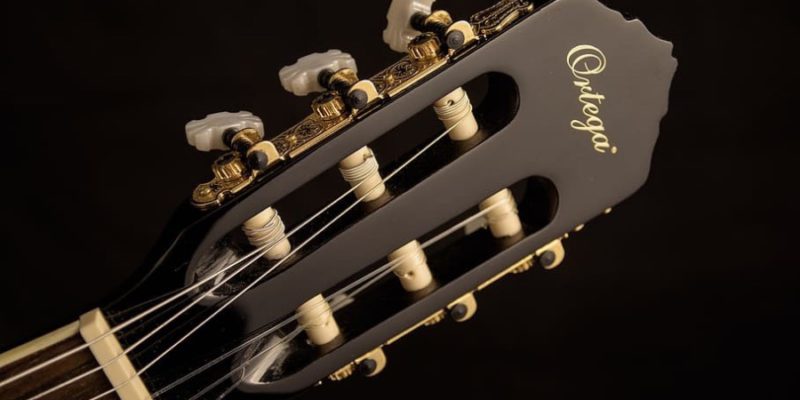Learning how to tune a guitar is one of the first steps to learn to play guitar. Every beginner guitarist should learn this. Usually, every time a guitarist picks up a guitar, they start by checking the tuning of the guitar. No matter how fantastic your guitar playing is, it will not sound good enough unless you tune the guitar correctly.
You can use a digital tuner or various tuning apps to easily tune your guitar, which is the perfect way to tune a guitar accurately. But after some stage, you must learn to tune your guitar by ear. In this article, I will discuss both methods of how to tune a guitar.
Table of Contents
Standard Guitar Tuning
Standard Guitar tuning is the most popular and widely used tuning variation. Every beginner guitarist starts by practicing in this tuning format. In standard tuning, the strings are tuned in the notes starting from the thickest string at the top (6th string) are E B G D A E. Easy way to remember the notes is to use mnemonics. Here are two examples of mnemonics to remember the order.
- Eat All Day Go to Bed Early
- Eddie Ate Dynamite Good Bye Eddie
Notice that, the thickest and the thinnest, both strings are tuned in E note. The difference is the thickest string is two octaves lower than the thinnest string.
Tuning A Guitar By Using A Digital Tuner
This is by far the easiest way to tune a guitar. First, you place the tuner at the head of the guitar. Then pick a string and the tuner will tell you to loosen or tighten the string.
The strings are loosened or tighten by turning the tuning knobs/keys. If you move the tuning key in a clockwise direction the string will tighten. And in an anti-clockwise move, the string will loosen.
In the same way, you can tune a guitar by using a mobile app. There are plenty of tuning apps available for free.
Beginners can easily tune their guitar by this method. Accurate guitar tuning is also maintained in this method.
Tuning A Guitar By Ear ( Without Any Tuner)
As you play and practice more, your ear develops enormously and starts to notice slight distunes as well. You might need to tune the guitar several times in a single session. Here I am going to discuss two methods of standard guitar tuning by ear. Both ways use other sources to tune the 6th string, and the rest of the strings are tuned with respect to the 6th string.
Using The 5th Fret Rule
This is the most common technique to tune a guitar by ear. First, pick the 6th string at the 5th fret (assuming the 6th string is already tuned). Then pick the open 5th string and listen to the notes together. The two different frequencies of these two notes will produce a third higher frequency, known as an overtone. The overtone will be inconsistent if the strings are not tuned. It will create a wobbling beat if you listen carefully.
Match the frequency of these two notes by changing the tuning key of the 5th string. As the notes come to a closer frequency, the beat will slow down. Once the frequencies match, the beat will completely resolve.
Now pick the 5th string at the 5th fret and the open 4th string and listen. Follow the same way as before to match the frequency of these two notes. Continue the same process to tune the 3rd string as well.
To tune the 2nd string, first, you will pick the 3rd string at the 4th fret instead of the 5th fret. Match the note with the open 2nd string note as well by using the same process. Once the 2nd string is done, tune the 6th string using the 5th fret again.
An easy way to remember this tuning method is “55545”. Standard tuning uses this harmonic interval to tune most of the guitar strings. Only the 3rd and 2nd strings use the major 3rd interval.
Tuning By Harmonics
Harmonics is the fastest way to tune your guitar by ear because your left hand would be free to change the tuning key while listening to the harmonics. First, play the harmonics at the fifth fret of the 6th string. Play the harmonics at the 7th fret of the 5th string and listen to the pitch difference between the two notes. Change the tuning key of the 5th string and match the frequencies of the two notes.
Once it is done, continue the same process with the 5th and 4th strings to tune the 4th string. Do the same to tune the 3rd string as well.
To tune the 2nd string, you will play harmonics at the 7th fret of the 6th string and match the pitch with the open 2nd string (no harmonics).
After tuning the 2nd string, play harmonics at the 7th fret and match with harmonics at the 5th fret of the 1st string. You can also play the harmonics at the 7th fret of the 2nd string and match the pitch with the open 1st string. Another way is to play harmonics at the 7th fret of the 5th string and match the pitch with the open high E string.
In the end, here are some guitar tuning tips.
- Tune up your guitar every time you start playing.
- Keep your guitar out of hot, cooler or humid places. Temperature & humidity affects the strings.
- Always loosen the strings before transport or storage.
- Replace your guitar strings regularly.














![The Top 12 Best One Piece Arcs [Ranked]](https://calibbr.com/wp-content/uploads/2022/06/The-Top-12-Best-One-Piece-Arcs-Ranked-180x180.jpeg)